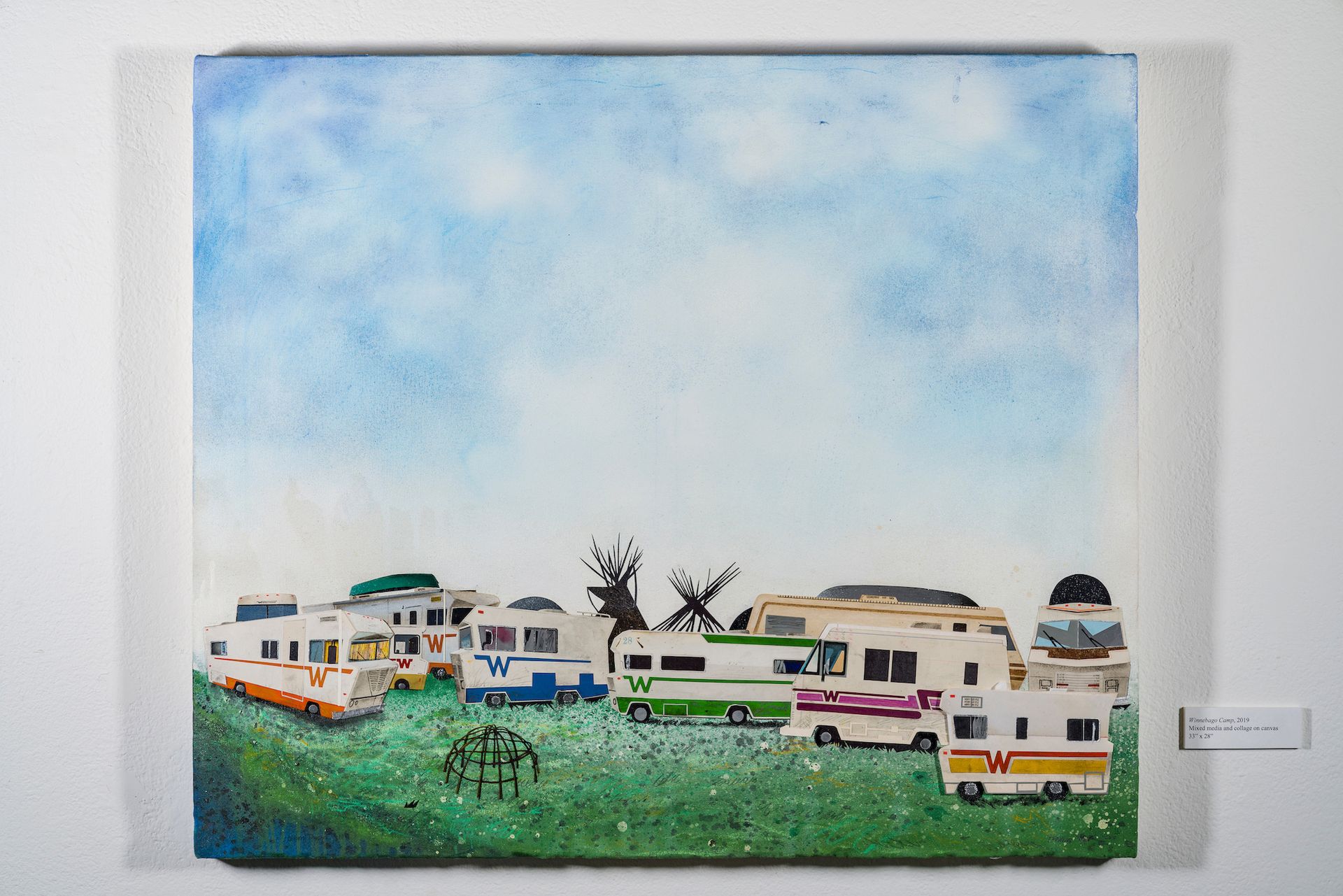The art dealer David Kimelberg—an enrolled member of the Seneca Nation, art collector and former venture capitalist and lawyer—founded K Art Gallery in Buffalo in 2020 to champion contemporary Indigenous artists. What he once envisioned as a “passion project” has been “much more successful than anticipated”, he says.
“My late brother was an artist and we always talked about opening a gallery focused on Indigenous contemporary art because unfortunately very few exist,” Kimelberg says. “I bit the bullet and opened the space in the middle of the pandemic. We’ve already worked with a number of fantastic artists, collectors and museums.”
A milestone came earlier this year when the Museum of Modern Art acquired five works by G. Peter Jemison (Seneca), one of the earliest artists Kimelberg collected. Several of Jemison’s paintings on paper bags will feature in the gallery’s debut presentation at The Armory Show.
Other highlights include a large, multi-panel work titled Native Nations Sovereign (2019) by Edgar Heap of Birds (Cheyenne and Arapaho) and an aluminium rendering of a sculpture by Luzene Hill (Eastern Band of Cherokee Indians) that is displayed in the fair’s off-site programme at the US Open. To Rise and Begin Again (2022) comprises undulating columns with Cherokee symbols that resemble the New York City skyline, referencing the Indigenous ironworkers who contributed to its construction and also the rise and fall of Cherokee language.

Henry Payer, Winnebago Camp (2019). Courtesy K Art Gallery. © University of South Dakota.
The concept for the stand is to “have equal representation” of more established artists together with emerging names, Kimelberg says. Among the latter are Erin Ggaadimits Ivalu Gingrich (Koyukon Athabaskan and Inupiaq) whose hand-carved sculptural masks evoke ancestral representations of the natural environment, like Titirgak from Sitnasuaq (2022), which depicts a pair of sandhill cranes draped with strings of glass beads.
K Art Gallery will also show mixed-media collages on canvas by Henry Payer (Ho Chunk) that explore themes related to cultural stereotypes and the post-reservation period. Works like Winnebago Camp (2019), which use the Winnebago motorhome as a symbol of the displacement of the Winnebago Tribe of Nebraska, have a “satirical humour that people have really responded to”, Kimelberg says.
At its Buffalo home base, the gallery is holding the group show Tangible/Intangible (until 7 October), which highlights geographical markers in Indigenous textiles and includes pieces by Venancio Aragon, Marcy Friesen, Porfirio Gutierrez, Patrick Dean Hubbell and Jordan Craig.
- The Armory Show 2022, 9-11 September (preview 8 September, Javits Center, New York.


